
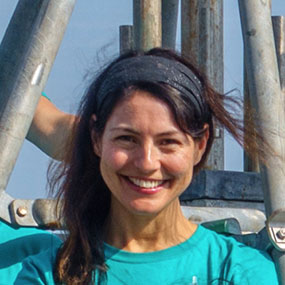
Associate Professor
School of Ocean Science and Engineering, University of Southern Mississippi
Leila Hamdan is an Associate Professor in the School of Ocean Science and Engineering at the University of Southern Mississippi. She received a BS from Rowan University, and a MS and PhD from George Mason University. She began her career as National Research Council Postdoc at the Naval Research Laboratory (NRL) where she was hired as a Research Scientist. After a decade of federal service, she left NRL for academia. Her work focuses on the impact of human activities on microorganisms, with focus on biogeography in shelf and slope sediments, and features that shape and change aquatic microbiomes. She has led or participated in oceanographic expeditions in every ocean and has been PI of research programs supported by NOAA, BOEM, DARPA and ONR. In 2018 she received the National Oceanographic Partnership Program’s Excellence in Partnering Award for leadership of the Gulf of Mexico – Shipwreck Corrosion, Hydrocarbon Exposure, Microbiology and Archaeology Project (GoM-SCHEMA) . For this project, she will be chief scientist on expeditions, coordinate logistics and planning with the remotely operated vehicle and the ship, oversee laboratory analyses, and supervise students and postdoctoral researchers supported by this project.
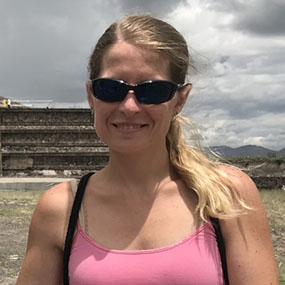
Marine Archaeologist
Bureau of Ocean Energy Management
Melanie Damour received Bachelor of Science and Master of Arts degrees from the Florida State University with a focus on underwater archaeology. Her primary area of expertise is historic shipwrecks and she has worked at sites ranging in age from the 16th century through the World War II era and in water depths from shallow, coastal areas to more than 7,500 feet. Over the course of a 22-year career, she has investigated submerged archaeological sites throughout the Gulf of Mexico as well as in Guatemala, Panama, and Mexico. Melanie is a Co-Principal Investigator on the project and Co-Chief Scientist on expeditions. She is responsible for directing all archaeological aspects of the project including remotely operated vehicle investigations, developing baseline archaeological site characterizations, selection of locations for sediment coring and placement of microbial recruitment experiments, and co-authoring of pre-cruise plans, post-cruise reports, and project-related peer-reviewed publications.

Research Geophysicist
U.S. Naval Research Laboratory
Warren T. Wood is a research geophysicist and head of the Geology and Geophysics section at the U. S. Naval Research Laboratory (NRL) at Stennis Space Center, MS. He came to NRL in 1993 after earning a B.S. in physics from the University of Michigan and a PhD in Geophysics from the University of Texas at Austin. While at NRL his activities have been directed toward using seismic and acoustic data to quantify methane and methane hydrate emplacement and transport in the upper kilometer of the seafloor in all water depths. He has developed numerical simulations as well as conducting many multidisciplinary field efforts (seismic, acoustic, coring, heat flow) as chief scientist. He has conducted some of the earliest field efforts in seismic oceanography directed toward quantification of ocean mixing. On this project, he will be researching the use of machine learning to predict seafloor dispersal of microorganisms.

Undersea Systems Engineer
University of Southern Mississippi
Max Woolsey received a BS and MS in Electrical Engineering from the University of Mississippi. He has nearly a decade of experience in undersea systems engineering, and has worked extensively on applications concerning unmanned maritime systems. His publications span ecological studies involving seafloor lander experiments, seafloor imagery products, and the design of computational tools for marine research. Woolsey has extensive experience in the design and operation of autonomous vehicles through his work with the National Institute of Undersea Technology and has participated in numerous oceanographic expeditions. For this project, Max is designing seafloor lander experiments that bridge microbiology and hydrodynamics and will supervise all shipboard navigation.

Marine Archaeologist
Bureau of Ocean Energy Management
Doug is a Senior Marine Archaeologist in BOEM’s Gulf of Mexico Region and has been with the agency for nine years. Since 2001 he has worked on archaeological projects throughout the Gulf of Mexico’s Outer Continental Shelf and adjacent coastal states, with particular emphasis on 19th Century and World War II shipwrecks. Doug will be assisting with directing the remotely operated vehicle reconnaissance surveys and archaeological characterizations of the two shipwreck study sites.

Laboratory Manager
School of Ocean Science and Engineering, University of Southern Mississippi
Anirban completed his MS in Molecular/Micriobial Ecology from BGSU, Ohio and has a Master’s in Microbiology from Bangalore University, India. His research at BGSU is broadly based on identification, enumeration and diversity of nitrifying bacteria in the Laurentian Great Lakes. He had also worked on a project involving detection and identification of toxic cyanobacterial blooms (Microcystis aeruginosa) with help of satellite (LANDSAT –TM) remote sensing in the western basin of Lake Erie. For this project he will be investigating the microbial community structure in water column and sediments, interactions between microbial hosts (historic shipwrecks) and pathogens in these habitats, microbial diversity and their function, and associations between these organisms and their effects on human and environmental interests.
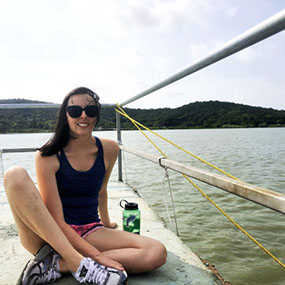
Post Doctoral Research Associate
School of Ocean Science and Engineering, University of Southern Mississippi
Justyna Hampel is an aquatic biogeochemist and she completed her PhD in Environmental Sciences at Wright State University, where she studied nitrogen cycling and harmful algal blooms, such as Microcystis and Planktothrix, in eutrophic waters (Lake Taihu, Lake Okeechobee and St. Lucie Estuary, Lake Erie). Justyna’s research focuses on pairing geochemical rates with functional gene abundance and microbial community composition. For this project she will be investigating the effects of historic shipwrecks on microbial communities, microbial biogeography, and geochemistry in deep-sea sediments.
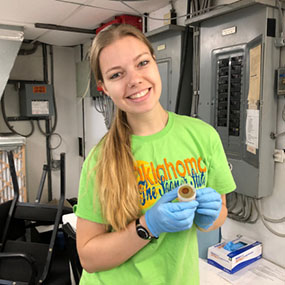
Graduate Research Assistant (PhD Program)
School of Ocean Science and Engineering, University of Southern Mississippi
Rachel is a PhD student under Dr. Leila Hamdan at University of Southern Mississippi’s Division of Coastal Sciences. Her research interests have focused on the effects of oil spill contaminants on microbially-induced corrosion and biofilm formation on metal-hulled historic shipwrecks. On this cruise, she will be contributing to the project by deploying microbial recruitment experiments adjacent to historic shipwrecks to determine how microorganisms colonize built structures on the seafloor, including shipwrecks.
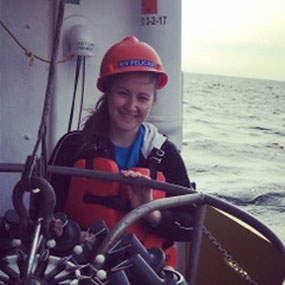
Graduate Research Assistant (M.S. Program)
School of Ocean Science and Engineering, University of Southern Mississippi
Rachel’s research involves using bioinformatic and statistical approaches to investigate how historic shipwrecks may shape seafloor microbial biogeography and the island effect shipwrecks may have on deep-sea microbiomes. She will be involved in the research cruises, performing laboratory work, and developing a thesis based on this project.

Graduate Research Assistant
U.S. Naval Research Laboratory
Taylor is a Geology PhD student at Mississippi State University whose research interests include utilizing machine learning techniques to predict fundamental seafloor and sub-seafloor properties. She has recently completed a global prediction of seafloor total organic carbon. At present, she is working to predict the thickness of oceanic sediment along with the fraction clay encountered with depth. For this project, she aims to understand the types of biological data that are collected in an effort to apply machine learning to biology related research questions.
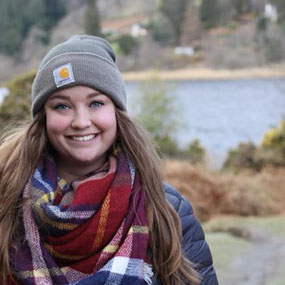
Marine Education Specialist I
Marine Education Center, The University of Southern Mississippi
Jessi received her B.S. degree in Marine Biology from The University of Southern Mississippi and began working as an educator at the Marine Education Center in 2014. All throughout college, her focus was mainly on marine mammal cognition and behavior, but she has since gained a new appreciation for engineering and physical oceanography. For this cruise, she will be acting as the education and outreach correspondent by connecting the research vessel to the general public. The Marine Education Center has recently debuted a brand-new residential summer camp, and now as the Summer Camp Coordinator, she has built the program’s curriculum to integrate the camp’s hands-on, interactive lessons to our current mission with remotely operated vehicle Odysseus.
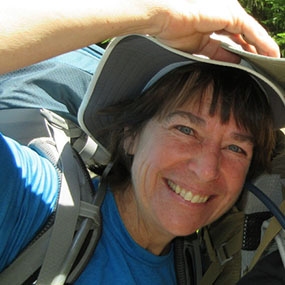
Science Teacher
Wallace and Pricilla Stevenson Intermediate School
Betsy is a fourth grade math and science teacher at Wallace and Pricilla Stevenson Intermediate School (WPSIS) in White Salmon, Washington. She is participating as Teacher at Sea to become a more knowledgeable teacher about our threatened ocean environments. She hopes to share the importance of changing human behavior to protect our oceans, and to encourage the next generation of scientists. She also looks forward to revisiting archaeology, which was her major for her Bachelors of Arts degree.